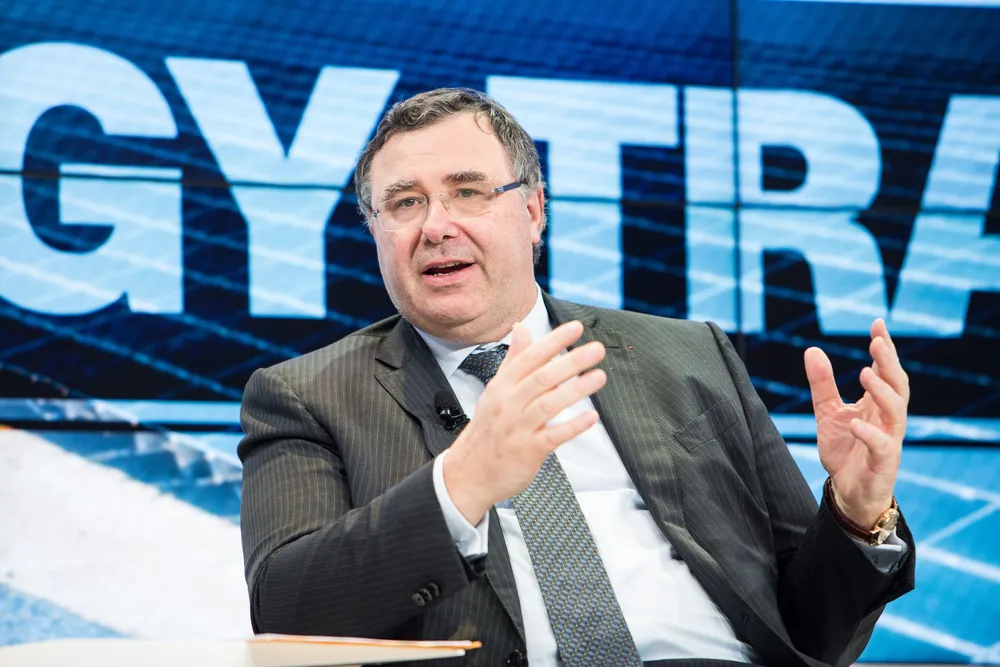TotalEnergies biggest German offshore wind developer after latest tender win
French oil & gas giant to pay $208m for gigascale North Sea site with required 'overplanting' of up to fifth of grid connection capacity

TotalEnergies, for the third year in a row, has won a gigascale acreage at a German offshore wind tender that went into negative bidding.
The French oil & gas giant was successful against one other (unknown) bidder in the auction for the right to build and operate the 1GW N-9.4 far-offshore site at 150 kilometers northwest of the German island of Heligoland, with a pledge to pay the German state €180m ($203m). Germany’s federal grids agency (BNetzA) yesterday held a so-called ‘dynamic auction procedure’ (negative bidding) after two bidders had handed in zero-subsidy bids in the first leg of the auction in early June.
"I congratulate our member company TotalEnergies on its auction success! Total Energies has secured a development portfolio of 7.5GW, making it the largest developer of offshore wind farms in Germany," said Stefan Thimm, managing director at the offshore wind federation, which represents German operators for wind at sea.
TotalEnergies at tenders last year and in 2023 had already secured vast capacities of North Sea acreage, but in the previous years had to pay considerably more for the sites it won.
The fact that only two bidders dared to participate in the negative bidding round this time, and that TotalEnergies secured the latest site with a much lower bid than in previous years, showed a growing risk awareness in the wider offshore wind industry. In last year's tender for the 1GW N-12.3 and the 1.5GW N-11.2 site, there were still seven and nine bidders, respectively, participating in the dynamic bidding procedure.
"The results of the auction for site N-9.4 clearly demonstrate how significantly the risks for offshore wind developers have increased in recent years due to geopolitical tensions and supply bottlenecks,” Thimm said.
“The current auction process no longer reflects economic realities. These include mandatory overplanting, rigid implementation deadlines and the associated penalties.
"These risks are reflected in the significantly lower auction proceeds compared to previous years and in only two zero-cent bids.”
The fact that TotalEnergies was willing to pay at all for the right to build the wind farm, may be explained with the attractiveness of the site.
Synergies and strategic review
The N-9.4 area lies next to a wide shipping route, the route 10 to its Northwest and a smaller shipping route to its East, which means the site is less exposed to wake effects than other offshore wind zones.
This, plus its far-offshore location, means that the site can expect to generate power during more than 3,000 full load hours per year, the BWO said at a press conference, more than the about 2,300 full load hours the sites auctioned off last year are estimated to produce.
Also, TotalEnergies said the site's closeness to other areas it won recently allows for synergy effects.
The oil and gas firm added that, considering longer delays in the connection timelines announced by German transmission system operators (TSOs), it has launched a "strategic review of the various concessions it obtained since 2023, with a view to engaging in dialogue with the German authorities to explore the conditions of their possible developments".
Overplanting
Bidders at Germany’s offshore wind tender this year for the first time were asked to ‘overplant’ the site by 10 or 20% when compared to its grid connection capacity.
The measure is seen as a test for greater system efficiency, as it should allow more days on which the wind farm can run at the full grid connection capacity.
While overplanting likely will increase the efficiency of the grid link, it also increases the investment needs for the developer and operator, the BWO criticised.
"The regulatory requirement to overplant grid connections increases electricity generation costs. Developers of offshore wind farms have an intrinsic motivation to overplant them and are experts in finding the optimal level themselves," Thimm said.
"I welcome the fact that the responsible authorities quickly complied with our request to make the overplanting requirements more flexible than initially planned.
“However, this is not sufficient for the future. Once results are available, fixed specifications should be completely eliminated in the future.”
Site N-9.4 covers 146 square kilometres and has not been pre-developed by the state. It is scheduled to be linked to the grid in 2032. Qualitative criteria played no role in the tender.